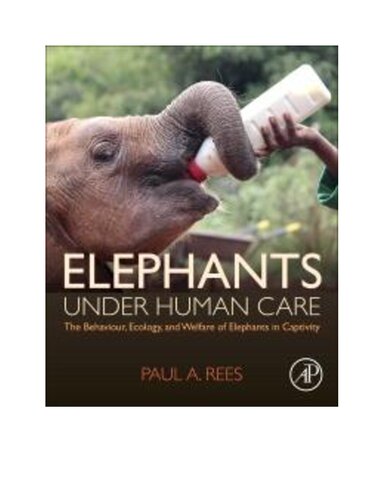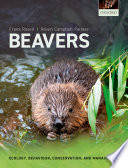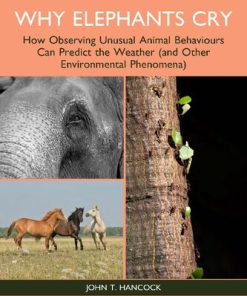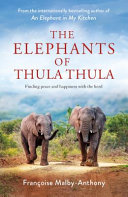(Ebook PDF) Elephants under human care the behaviour ecology and welfare of elephants in captivity 1st edition by Paul Rees 0128167262 9780128167267 full chapters
$50.00 Original price was: $50.00.$25.00Current price is: $25.00.
Elephants under human care : the behaviour, ecology, and welfare of elephants in captivity 1st edition by Paul A. Rees – Ebook PDF Instant Download/DeliveryISBN: 0128167262, 9780128167267
Full download Elephants under human care : the behaviour, ecology, and welfare of elephants in captivity 1st edition after payment.

Product details:
ISBN-10 : 0128167262
ISBN-13 : 9780128167267
Author: Paul A. Rees
This book draws together, for the first time, the published research on the behaviour, ecology and welfare of elephants living in zoos, circuses, logging camps and other captive environments in a single comprehensive volume. It takes a multi-disciplinary approach, considering the work of zoo biologists, animal behaviour and welfare scientists, veterinarians, philosophers, zoo educators, tourism specialists, conservation biologists, lawyers and others with a professional interest in elephants.
Elephants under human care : the behaviour, ecology, and welfare of elephants in captivity 1st Table of contents:
1 Elephants and their relationship with humans
1.1 Another book about elephants
1.2 What is an elephant?
1.2.1 Elephant taxonomy
1.3 Conservation status
1.3.1 The status of Asian elephants in the wild
1.3.2 The status of African elephants in the wild
1.4 The human use of elephants
1.4.1 Elephants in ancient times
1.4.2 Have elephants been domesticated?
1.4.3 Ceremonial and religious use of elephants; elephants as gifts
1.4.4 The use of elephants for transportation and as weapons of war
1.4.5 Elephants and forestry operations
1.4.6 Elephants as entertainers: circuses, sports and tourism
1.4.7 Elephants as ambassadors for conservation
1.5 The beginning of elephant research
1.5.1 Aristotle and elephants
1.5.2 Anatomical research
1.5.3 Anecdotes as a source of knowledge about elephants
1.5.4 Papers in academic journals
1.5.5 Early physiological research
1.6 Unacceptable elephant science
1.7 Captive elephants as proxies for wild elephants
2 Ethological data collection and elephant activity budgets
2.1 Introduction
2.2 Methodology
2.2.1 Identifying individuals
2.2.2 Studying elephants in zoos
2.2.3 Ethograms
2.2.4 Methodological difficulties
2.2.5 Data collection by caregivers
2.3 Activity budgets
2.3.1 Introduction
2.3.2 Feeding
2.3.3 Dusting
2.3.4 Walking
2.3.5 Resting, sleeping and nocturnal behaviour
2.4 The 24-hour needs of elephants in zoos
3 Elephant social structure, behaviour and complexity
3.1 Introduction
3.2 The structure of elephant societies
3.2.1 Elephant societies in the wild
3.2.2 Elephant societies in captivity
3.2.3 Social behaviour and breeding
3.3 Associations between individuals and friendships
3.4 Introductions into an elephant group
3.5 Protective formations
3.6 Dominance hierarchies
3.7 Aggression, appeasement and chastisement
3.8 Personality
4 Elephant reproductive biology
4.1 Introduction
4.2 Historical accounts of sexual behaviour
4.3 Courtship and mating behaviour
4.4 Chemical control of reproduction
4.4.1 Musth
4.4.2 Endocrine monitoring of females
4.5 Behavioural indicators of oestrus
4.6 Gestation, pregnancy management and birth
4.7 Parenting and calf development
4.7.1 Developmental milestones and birth statistics
4.7.2 Parenting and allomothering
4.7.3 The effect of a calf on social interactions in the herd
4.8 Early sexual behaviour
4.8.1 Early male sexual behaviour
4.8.2 Juvenile mounting
4.9 Reproductive challenges and solutions
4.9.1 Acyclicity and sperm quality
4.9.2 Obstetrics and birthing problems
4.9.3 New techniques in reproductive physiology
5 Elephant cognition, communication and tool use
5.1 Introduction
5.2 Cognition
5.2.1 Historical perspectives
5.2.2 Self-awareness: do elephants know they exist?
5.2.3 Discrimination between objects and between quantities
5.2.4 Insightful behaviour
5.2.5 Pointing
5.2.6 Memory
5.3 Communication
5.3.1 Introduction
5.3.2 Vocal communication
5.3.3 Human speech imitation
5.3.4 Chemical communication
5.3.5 Tactile and seismic communication
5.4 Visual acuity and visual discrimination
5.5 Tool use
5.6 Knowing when to cooperate
6 Elephant ecology and genetics
6.1 Introduction
6.2 Ecophysiology
6.2.1 Introduction
6.2.2 Acclimatisation to new environments
6.2.3 Thermoregulation
6.3 Feeding ecology and energetics
6.3.1 Food preferences
6.3.2 Feeding methods
6.3.3 Calculating food consumption
6.3.4 Digestibility
6.3.5 Food passage time
6.3.6 Defaecation
6.3.7 Food supplementation
6.4 Energetics
6.5 Exhibit design and enclosure use
6.5.1 Introduction
6.5.2 Enclosure use
6.5.3 Substrate and indoor versus outdoor preferences
6.5.4 Multispecies exhibits
6.5.5 Rotational exhibits
6.5.6 Elephants as agents of landscape change in zoos
6.6 Population ecology
6.6.1 Introduction
6.6.2 Age determination from teeth
6.6.3 Longevity and life expectancy in zoos
6.6.4 Birth rates and calf survival
6.6.5 Sexual maturity and mean calving interval
6.6.6 Reproductive performance of Asian camp elephants
6.6.7 Reproductive cessation and the ‘mother hypothesis’
6.6.8 Sustainability of zoo populations
6.6.9 Importation of elephants from range states
6.7 Genetics
6.7.1 Introduction
6.7.2 Interspecific hybridisation
6.7.3 Intraspecific hybridisation
6.7.4 Genetic diversity
7 Elephant welfare
7.1 Historical perspectives
7.2 Measuring elephant welfare
7.2.1 What is welfare?
7.2.2 How can welfare be measured?
7.2.3 Population-level welfare indices
7.2.4 Body weight and condition scoring
7.2.5 The welfare of elephants working in tourism
7.2.6 Stress and distress
7.2.7 Behaviour as a welfare indicator
7.2.8 Stereotypic behaviours
7.3 Environmental enrichment
7.3.1 Defining environmental enrichment
7.3.2 Food and foraging as enrichment
7.3.3 Substratum and trees as enrichment
7.3.4 Water as enrichment
7.3.5 Sleep, rest and enrichment
7.3.6 Sound, music and art as enrichment
7.3.7 Interactive toys
7.3.8 Improving elephant welfare through breeding
7.3.9 Social contact: the ultimate in enrichment
7.4 Training
7.5 Locomotion and gait
7.6 Obesity
7.7 Disease
7.7.1 Introduction
7.7.2 Histology
7.7.3 Foot health
7.7.4 Tuberculosis
7.7.5 Elephant endotheliotropic herpesviruses
8 Housing and handling elephants
8.1 Introduction
8.2 Wild elephant decline and the establishment of ex situ breeding programmes
8.3 Elephant enclosures
8.3.1 Housing and containment
8.3.2 Early elephant houses
8.3.3 Enclosure size and substratum
8.3.4 New enclosures
8.4 The cost of keeping elephants under good welfare conditions
8.5 Elephants and their caretakers
8.5.1 Keeper–elephant bonds
8.5.2 Traditional elephant expertise versus zoo husbandry
8.5.3 Keeper and mahout deaths
8.5.4 Free versus protected contact
8.6 Transportation
9 Ethics, pressure groups and the law
9.1 Introduction
9.2 Is it ethical to keep elephants in captivity?
9.3 Pressure groups
9.4 Law
9.4.1 Introduction
9.4.2 Ivory in human ownership
9.4.3 The UN Convention on Biological Diversity and the IUCN
9.4.4 Elephants, zoos and the law
9.4.5 The law and elephants in private ownership
9.4.6 Elephants, entertainment and the law
9.4.7 Legal personhood and habeas corpus
9.4.8 Elephant cruelty and cruel methods
9.4.9 Zoos and the wildlife trade
9.4.10 A right to companionship and retirement
9.4.11 Financial support for in situ conservation
10 The conservation value of captive elephants
10.1 Introduction
10.2 The popularity of elephants in zoos
10.3 Zoo elephants as insurance populations
10.3.1 Introduction
10.3.2 The Species Survival Plan in North America
10.3.3 The European Endangered species Programme
10.3.4 Are zoo elephant populations sustainable?
10.4 Scientific research
10.5 The development of technologies relevant to field conservation
10.6 Educational function
10.7 Professional training of local conservationists and associated technology transfer
10.8 Fundraising for in situ conservation
10.9 Do zoo and conservation authorities support captive breeding in zoos?
10.10 Captive breeding in range states
10.11 ‘Domestication’ of African elephants
10.12 Conclusion
11 The future of elephants in captivity
11.1 Introduction
11.2 Elephant ranching
11.3 Rewilding – shades of Jurassic Park
11.4 Release to the wild
11.5 Welfare concerns
11.6 Sanctuaries
11.7 A repository of useful genes
11.8 Cloning
11.9 Elephants as therapy
11.10 Climate change
11.11 A role for zoos?
11.12 Consumptive use or intensive protection zones?
11.13 The court of public opinion
11.14 Predictions
People also search for Elephants under human care : the behaviour, ecology, and welfare of elephants in captivity 1st:
how do elephants take care of their babies
do elephants protect humans
elephant care unchained
elephants understand death
elephant human characteristics
Tags:
Elephants, human care,the behaviour,ecology,welfare,captivity,Paul Rees
You may also like…
Animals & Pets - Natural History
Politics & Philosophy - Social Sciences
Biology and other natural sciences - Zoology
Business & Economics
Animals & Pets - Animals
(EBOOK PDF)Why Elephants Cry 1st Edition by John Hancock 9781000866704 100086670X full chapters
Animals & Pets - Animals
Biology and other natural sciences - Zoology
Computers - Applications & Software
The Essentials of Financial Modeling in Excel: A Concise Guide to Concepts and Methods 1st Edition












